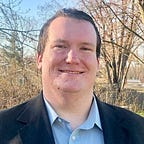Reimagining MDP Rules, Part II: Conventions
Conventions have many roles in the Michigan Democratic Party. They allow Democrats to network with activists they might not otherwise meet. They give candidates a chance to rally the base. But perhaps the most important role of a convention is to conduct Party business.
While many nominees for office — including Governor, Congress, Legislature, and so forth — are nominated at the August primary election, others (including candidates for Secretary of State, Attorney General, Supreme Court, and statewide education boards) are nominated through a State Convention just after the primary. Some party offices — Chair, 1st Vice Chair, and 2nd Vice Chair — are also chosen through a State Convention. It is also through conventions that we adopt formal statements of policy in the form of resolutions or a platform. More recently, Michigan Democrats have begun endorsing candidates for certain offices in order to allow them to present themselves to donors and other supporters as the Party-backed candidate well ahead of their formal nomination.
Replacing county conventions and district caucuses with district conventions
Before each State Convention, though, we have local conventions. In Wayne County, these take the form of congressional district conventions; most other places in Michigan have county conventions. Those conventions are precursors to the State Convention. At local conventions, State Convention Committee members and alternates are elected, and resolutions adopted at these conventions are then forwarded to the Resolutions or Platform Committee for possible adoption at the statewide level. (Back in the day, that was also when State Convention delegates were elected; that changed when the MDP allowed all MDP members to vote.)
The problems with that include the fact that there are more than 80 county conventions that local leaders have to conduct. Plus, in rural districts with several counties, not everyone has an opportunity to run for a spot on a State Convention committee, since district chairs only have 12 spots (and 4 per committee) to allocate to the counties.
In addition, congressional district leaders, along with delegates and alternates to State Central, are elected by district caucuses at the State Convention. The problem with that is that, in order to vote on your own district leadership and representation, you have to travel to the Cobo Center on a Saturday during the winter and pay for parking, gas, and (if needed) a hotel room. It’s not exactly the most convenient thing for me, living in Kentwood; it’s even harder for Yoopers.
I would take the county conventions, plus the congressional district caucus at State Convention, and merge the functions of these county conventions and the district caucuses at State Convention into one congressional district convention that would happen 2–5 weeks before the State Convention.
These district conventions would include:
- Resolutions
- Election of members and alternates to the State Convention Rules, Credentials, and Resolutions committees
- Election of district officers, Executive Committee, and State Central Committee (spring of odd years)
- Election of district-level MDP Standing Committee members (spring of odd years)
- Election of National Convention delegates and alternates (spring of presidential years)
- Nomination of Presidential Elector (fall of presidential years)
This would make things much easier for both local Party leaders as well as MDP staff. It might also be a cost-saving measure for the MDP, who wouldn’t have to reserve rooms at the convention center for three meetings per room per convention. This would also allow people to participate without making them invest so much of their time and money just to vote on their own district’s leadership.
National Conventions
In addition to carrying out important national party business, Democratic National Conventions are also a fun-filled display of the best of our party — and the best of our country.
National convention delegates include both pledged delegates and the famed “super delegates” (DNC members, governors, members of Congress, and all living Democratic Presidents, VPs, congressional leaders, and DNC chairs). In most parts of the country, district-level pledged delegates are elected via District convention, while the statewide delegates are elected at state conventions. In Michigan, the former is true; however, statewide delegates here are elected via the State Central committee.
In that respect, Michigan is almost 50 years behind the proposed reforms of the McGovern-Fraser Commission, which suggested that no more than 10% of delegates be chosen by party leaders.
Since endorsement conventions happened in the spring of even-numbered years, let’s have the election of statewide DNC delegates take place at the Endorsement Convention. Likewise, district-level delegates can be elected at the district conventions- that happen before the Endorsement Convention.
Electing DNC Members through State Convention
There are 447 Democratic National Committee members across the country who are selected in various ways. For example:
- Each State Party’s Chair and highest-ranking Vice Chair of different gender serve automatically on the DNC.
- 200 DNC spots are apportioned among the states based on population and Democratic strength; Michigan has six of these positions.
- Around 60 DNC members represent stakeholder groups like the College Democrats of America, National Federation of Democratic Women, and U.S. Senate Democrats.
- 75 DNC members are elected “at-large” by the currently-existing DNC members.
The DNC requires states to elect their share of the 200 state-apportioned DNC members in presidential-election years through one of four methods: Primary election; state convention; state committee; or by the state’s National Convention delegation. Michigan DNC members are elected by the State Central Committee.
To increase trust and grassroots engagement with the DNC, these members should instead be elected through State Convention. The Endorsement Convention would be a good time to do this.
